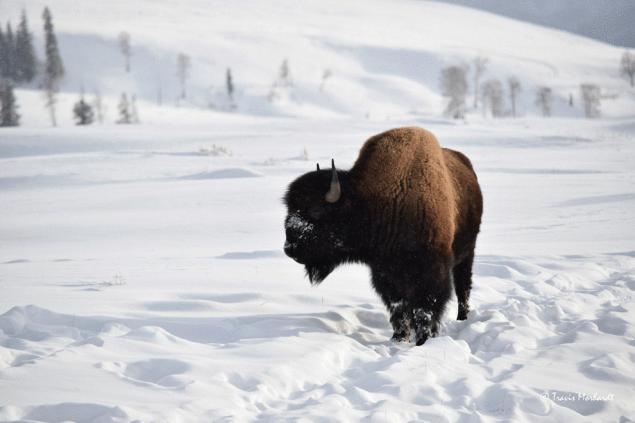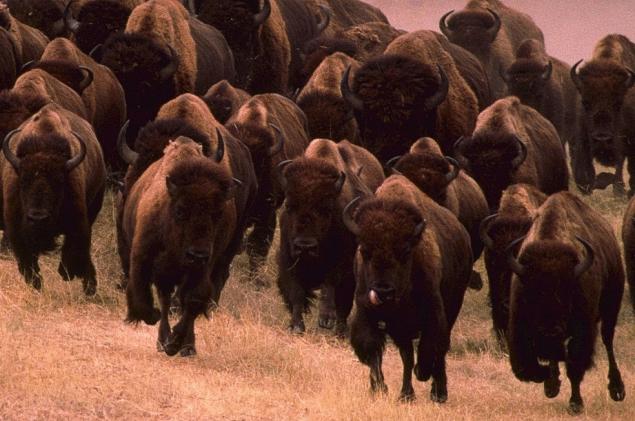476
5 fascinating facts about the Buffalo

Bison is an iconic animal and a master of the plains of the North American continent.
The following facts will interest all who admire this furry giant American prairies:
1. This is a very fast and agile animal, although apparently the Buffalo can resemble a clumsy giant hairball. When running the bison are able to reach a speed of 65 kilometers per hour and they can jump to a height of 1.8 meters!
Tourists often underestimate the speed and overestimate the Buffalo, their submissive temper, so in the Yellowstone Park they are attacking people more often than other types of animals that live there.

2. The coat of a Buffalo is very thick and provides a powerful insulation. The snow covering it, not even melting.
3. The bison played a huge role in maintaining the balance of the ecosystem of the plains. They were grazed on natural meadows, thereby digging up kitchen by tearing up the ground and fertilizing it with their droppings.
Prairie dogs preferred to settle in areas where grazing bison, and the short grasses of the Prairie allowed them to see predators. Meanwhile, bison was the primary food source for humans and wolves, and their carcasses were a treat for the scavengers. Without the Buffalo of the plains would never have been fertile, a unique ecosystem before the emergence of agriculture.

4. European settlers have caused enormous damage to populations of bison, managing to destroy a huge number of these animals, after which they were only a few hundred individuals. On the continent there was only one place where, since prehistoric times, bison have lived continuously. Is Yellowstone national Park.

5. The number of bison currently has about 500 thousand individuals. This is all that remains of the 30 million of these noble animals once roamed the plains prior to resettlement of Europeans.
The vast majority of the Buffalo farmers breed for meat and hides. Only about 30 of thousands of bison graze in parks and public territories, 15 thousand of which are wild, meaning they graze freely on unfenced lands.
Their genetic characteristics, as the number of have undergone considerable change. It is now rare to find pure-blooded bison. Professor of veterinary pathobiology from Texas, Dr. James Derr for decades conducted genetic studies of Buffalo and found that only 8 thousand of these animals or 1.6% of the total number of species has not been interbred with cattle. This species is considered "ecologically extinct."
So, unfortunately, the memory of free-roaming plains bison, probably will forever remain on the pages of history books.published

Source: mixstuff.ru/archives/77353























